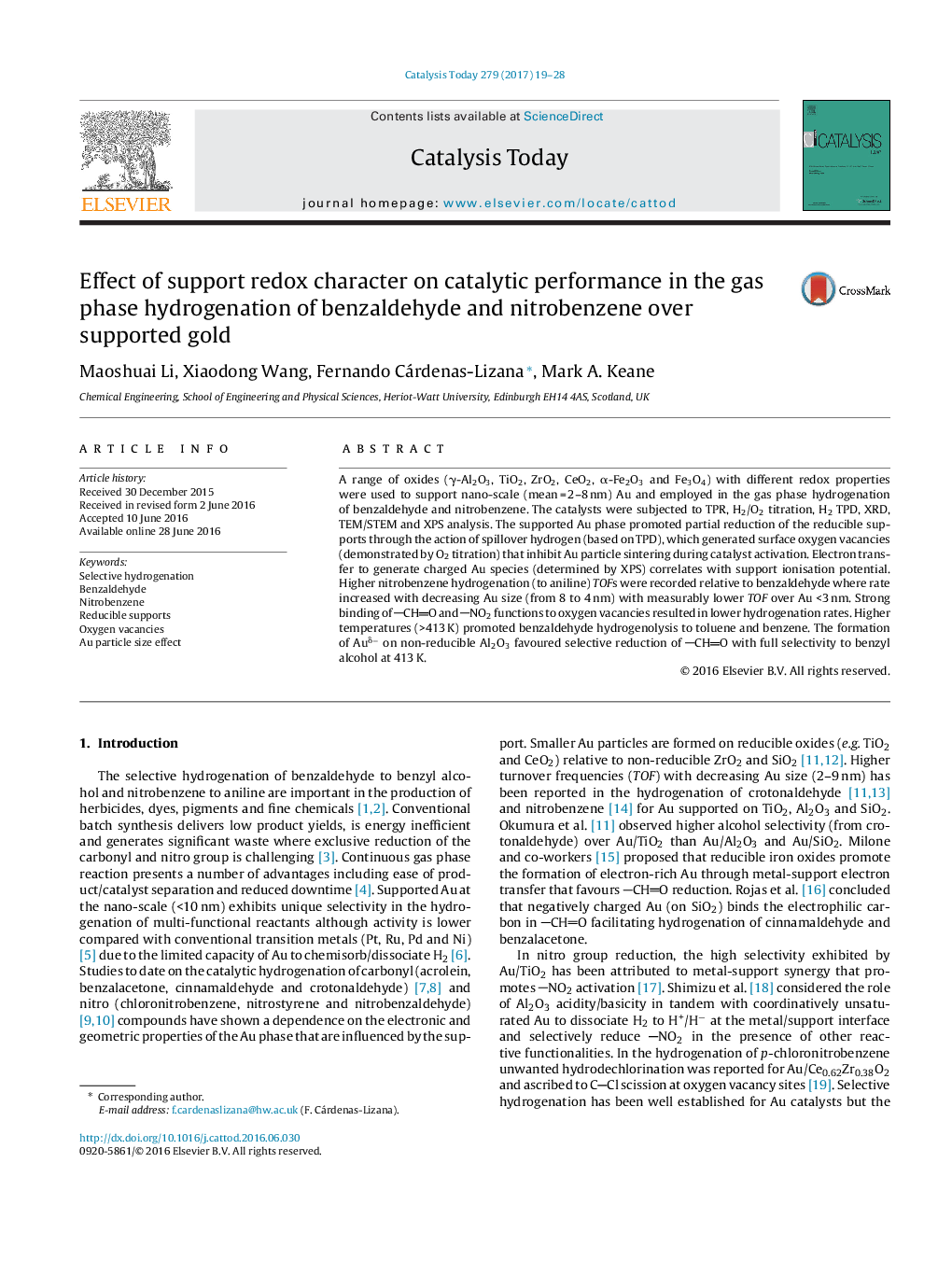| Article ID | Journal | Published Year | Pages | File Type |
|---|---|---|---|---|
| 4757291 | Catalysis Today | 2017 | 10 Pages |
â¢Exclusive hydrogenation to benzyl alcohol and aniline over supported Au.â¢TOF increased with decreasing Au size (8- 4 nm); lower TOF over Au <3 nm.â¢CHO and NO2 repulsion by Auδ+ and strong binding to oxygen vacancies lower TOF.â¢Auδâ on non-reducible Al2O3 favours selective formation of benzyl alcohol.â¢Higher temperatures (>413 K) promote hydrogenolysis to toluene and benzene.
A range of oxides (γ-Al2O3, TiO2, ZrO2, CeO2, α-Fe2O3 and Fe3O4) with different redox properties were used to support nano-scale (mean = 2-8 nm) Au and employed in the gas phase hydrogenation of benzaldehyde and nitrobenzene. The catalysts were subjected to TPR, H2/O2 titration, H2 TPD, XRD, TEM/STEM and XPS analysis. The supported Au phase promoted partial reduction of the reducible supports through the action of spillover hydrogen (based on TPD), which generated surface oxygen vacancies (demonstrated by O2 titration) that inhibit Au particle sintering during catalyst activation. Electron transfer to generate charged Au species (determined by XPS) correlates with support ionisation potential. Higher nitrobenzene hydrogenation (to aniline) TOFs were recorded relative to benzaldehyde where rate increased with decreasing Au size (from 8 to 4 nm) with measurably lower TOF over Au <3 nm. Strong binding of CHO and NO2 functions to oxygen vacancies resulted in lower hydrogenation rates. Higher temperatures (>413 K) promoted benzaldehyde hydrogenolysis to toluene and benzene. The formation of Auδâ on non-reducible Al2O3 favoured selective reduction of CHO with full selectivity to benzyl alcohol at 413 K.
Graphical abstractDownload high-res image (89KB)Download full-size image
